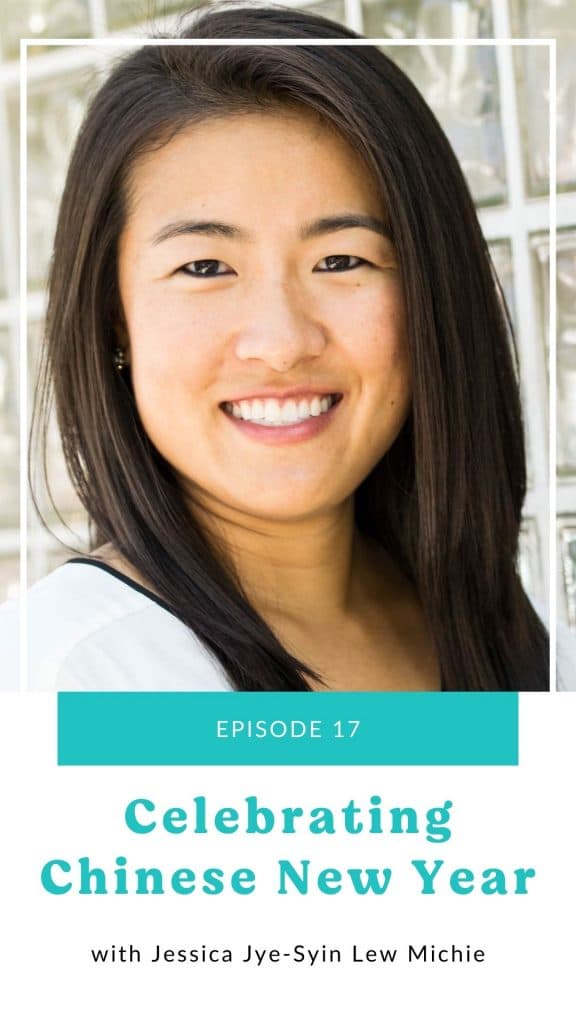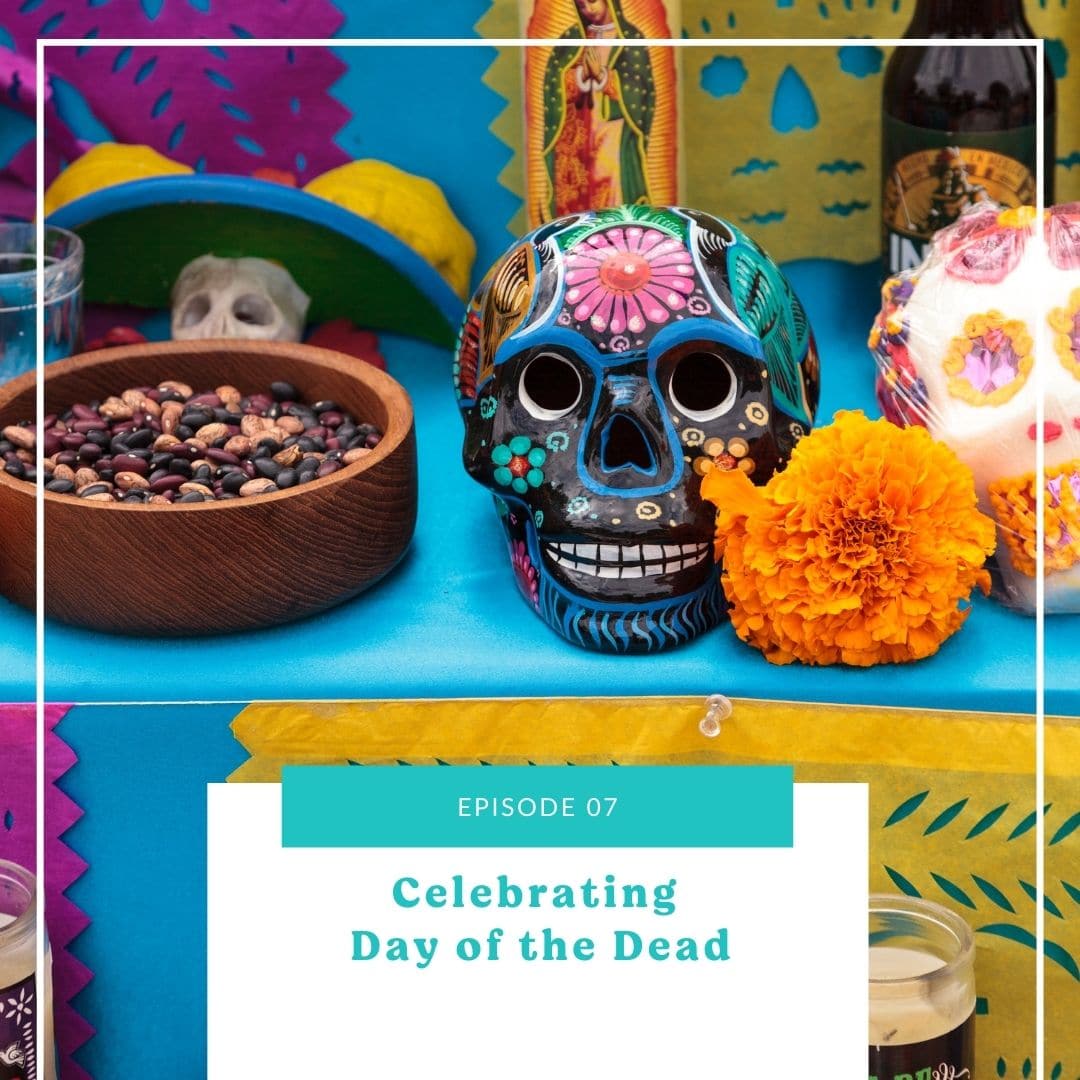17: Celebrating Chinese New Year
Learn about the history, symbolism and popular traditions of Chinese New Year, including the symbolism of numbers and color, the focus on family ties, and the importance of food.

The Lunar New Year is celebrated in many countries, but the Chinese New Year celebrations are perhaps the most widely recognized. Traditions focus on family and wishes for good luck, health, and prosperity in the new year.
Chinese- American Jessica Jye-Syin Lew Michie shares how her family chose to celebrate the holiday and some ways that we can too. Don’t miss out on taking a virtual field trip with kids about Chinese New Year to learn more about it.
Table of contents
- Growing up in California you didn’t speak Chinese, so why did you decide to learn in college?
- What does Chinese New Year mean to you?
- What are some typical symbols for Chinese New Year?
- What are some traditions?
- How has your family celebrated Chinese New Year while living outside of China?
- What are some ways we can honor the spirit of Chinese New Year?
- Other episodes you may like
- Listen to this episode
- About the guest
- Show notes links
Growing up in California you didn’t speak Chinese, so why did you decide to learn in college?
Jessica grew up in a predominately Caucasian community, and she really just wanted to fit in and speak English with everyone. Eventually, she regretted not learning more about her culture while she was young, so while at college in Utah, she studied Chinese for two years. Jessica’s mom spoke Chinese when she was on the phone with her mother, so Jessica was familiar with the tonal aspects of the language. She also served her mission for her church in Taiwan, so she had the opportunity to visit her mom’s homeland and learn more Chinese.
What does Chinese New Year mean to you?
Jessica’s family always gathers together to celebrate by making tons of food. Extended family members all brought dishes over, such as fried rice and dumplings. Making dumplings was a wonderful time for Jessica and her family to sit together and enjoy conversations while making delicious food.
EPISODE summary text graphic
What are some typical symbols for Chinese New Year?
Chinese culture, in general, is very into symbols for both good and bad luck. The New Year is a time to wish those around you health, happiness, and longevity. So there are lots of symbols that support these ideas.
A main symbol is the color red, which symbolizes luck. There are red banners with spring couplets (little lines of poetry) and red lanterns.
There is also symbolism in the food. Dumplings, for example, are generally in a half-moon shape that resembles the old monetary unit yuanbao and symbolizes wealth and prosperity. Oranges, tangerines, and fish are common because the Chinese words for them sound similar to the words for wealth, luck, and prosperity (respectively). Eating long noodles is also a symbol of longevity. Tang yuan, a type of circular mochi, is a symbol of eternal completeness and togetherness.
All of these foods and symbols are meant to draw families closer together and celebrate the fact they will be together forever.
What are some traditions?
Jessica shares the legend of the Dragon Nian. This huge Dragon terrorized a small village every year. One year, an old man visited the village, all dressed in red and carrying some items with him. The villagers were confused why this man wasn’t afraid of the Dragon. The old man pulled out some firecrackers and lit them. The loud noises immediately scared the Dragon and he fled back up to his mountain, never to terrorize the village again.
Because of this legend, red is believed to drive away evil sprits, including dragons. People also hang red banners on their doorways to scare away any dragons. Firecrackers are a fun tradition, especially for the kids.
The Chinese New Year celebration is 14 days long, and the day before it starts, people do their spring cleaning. The cleaner your house is, the more luck and prosperity will come to you and your family during the following year. Some families wear all new clothes for the first day to further symbolize a fresh start.
Family is a very important part of the celebration. Families gather to celebrate for the two weeks, and they worship their ancestors. Tables are filled with food, fake money, and incense which are then burned to send these offerings to ancestors in the afterlife.
How has your family celebrated Chinese New Year while living outside of China?
Growing up, Jessica’s family enjoyed a wonderful fusion of Chinese foods, especially during the New Year celebrations. All the nearby extended family would gather together and eat delicious food and play games. A popular game her family played was Mahjong (a four-player, tile-based game). People old and young love this game, so it’s a great one to play at gatherings.
There is also a tradition called hong bao, or “red envelopes.” Inside each envelope is some money (provided by the married family members) that is given to all the single family members.
What are some ways we can honor the spirit of Chinese New Year?
A primary way to honor the spirit of the holiday is through making and eating Chinese food. Jessica has a blog where she shares many delicious family recipes. Dumplings are an especially family-friendly dish because kids can hep assemble the fillings.
Learning some simple Chinese phrases is another way to honor the Chinese New Year. There are two main dialects in the Chinese language, Mandarin and Cantonese. They are similar, but there are also major differences. So be aware of which language you are researching. There is also a popular Chinese New Year song called gong xi that wishes people good fortune through the upcoming year.
Looking up your zodiac is a fun way to celebrate as well. The Chinese have 12 zodiaces that are based on the year you were born.
There are so many resources online to learn more about Chinese culture, including how to play Mahjong, how to make red lanterns, reading some legends.
Thank you for joining me on this journey! Happy exploring!
Other episodes you may like

Listen to this episode
About the guest
Jessica Jye-Syin (Jee-eh Sheen) Lew Michie (Mickey)
Jessica was born and raised in Los Angeles. Her parents are both Chinese; her Mom emigrated from Taiwan in her teens and her Dad is a 3rd Generation American. Jessica grew up eating lots of home-cooked Chinese food and celebrated a handful of Chinese holidays throughout the years, but it wasn’t until she decided to take Mandarin classes at Brigham Young University that she became passionate about the language and culture. Eventually, she was called to serve a mission for the Church of Jesus Christ of Latter-day Saints in Taiwan, which further fueled her love for her heritage. She and her husband live in Burbank, CA and they enjoy cooking, eating and playing basketball together. Jessica currently teaches 9th Grade Biology in San Gabriel, CA. Her most recent interests include gardening, pickleball, writing google maps reviews about restaurants, making homemade ice cream and trying out new Plant-based recipes. She especially enjoys sharing her culture with others through word and good food.






